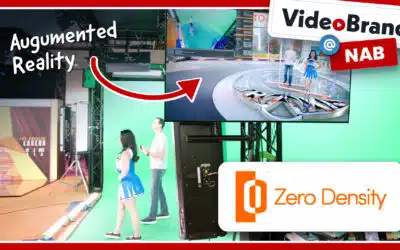Our F1s were shot with a Canon XL1, along with the rest of our weekend projects. It’s always been called a prosumer camera, and now we have a better idea as to why.
>>Geek Speak Warning<<
The main reason is a lack to set focus. The standard XL1 lens has auto-focus (consumer) capabilities, which we were told to turn off, but the focus ring will turn indefinitely.
On a real lens, any lens (still photography too), the focus ring can only focus on objects between a range of certain distances, from infinity to about 2′ (closer brings you into macro world). This is actually the joint job of 1AC ((First Assistant Camera)) and 2AC ((Second Assistant Camera)) on a film set. Also known as ‘taking marks’ or ‘getting measurements,’ the 1AC will hold one end of a tape measure as the 2AC takes it to where the action is happening. Once the distance is determined, the 1AC will set the focus and make a mark on a ring perpendicular to the lens (follow focus).
This is fine and good if the camera and actors aren’t moving, but generally they are. So usually a series of focus marks will be taken at key points of action. This is why rehearsal is good. It’s also called a stop-and-go — the actors and camera team slowly go through the action and call stop whenever they need to take marks. So the actor is on the same page and consistent with their movement, they receive marks of two pieces of tape shaped like a ‘T’ to mark the edge of their toes and the center.
The real finessing comes during the take when the 1AC must follow the action while watching the focus ring and adjusting accordingly. Perhaps that’s why 1AC is a job for a second year on F3s.
So going back to the XL1 (and thus ending the world’s longest aside), you can’t take focus marks. You might think you can memorize how much the ring shifts between focus points, but each time you turn back it’s something different (believe me, I’ve tried). The lens can be switched out for a more professional, manual lens, but I guess that’s out of the Film School’s budget. But the focus is probably the least professional aspect. The XL1 is a great camera, after all wide release features have been shot with it.
Now that I’ve posted more detail than I ever intended this post to have, I will return to it’s main purpose and clarify the title. Below is a link to a Flickr photo set of a table dolly for an XL1. Being that it used a computer controlled drill to cut out the design, I doubt any student would have made it, but the technique behind it can serve as some inspiration for easier devices ((Speaking of inspiration and easier devices, one F1 had this brilliant dolly shot into a projector room window, dollying left to right with the action. The Director/DP set up a wooden plank the length they needed, then put the XL1 on a skateboard and wheeled it along. It looked just as good as any Panther dolly shot)).
Flickr >> XL-1 Table Dolly




